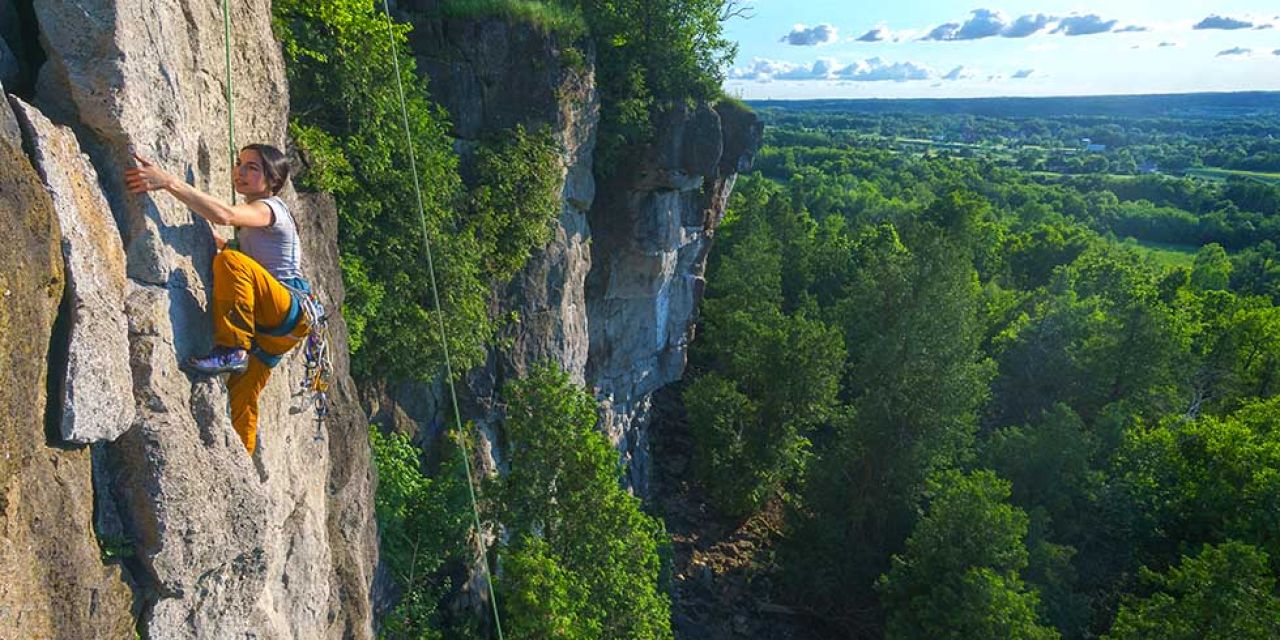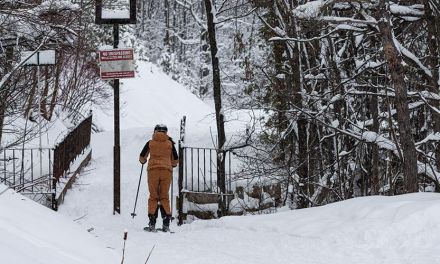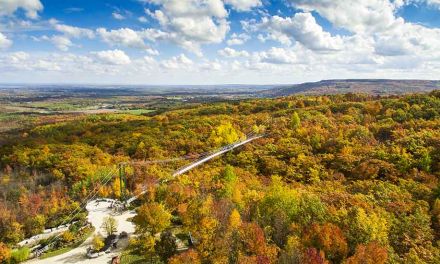For Those About to Rock
Words and photography by William Tam
The sport of climbing can seem way out of reach for newcomers—but it doesn’t have to be. This basic guide to climbing, as well as the different styles, techniques, and jargon, will hopefully remove some of the mystery and make it easier to get climbing.
Often described as a vertical puzzle, rock climbing provides a mental and physical outlet that almost anyone can enjoy. You may have seen the sport’s debut at the 2020 Tokyo Olympics or photos of climbers hanging from ropes hundreds of feet above the ground. At its essence, climbing is a sport in which participants ascend vertical walls with the goal of reaching the top. Climbing can be practiced indoors, on man-made walls with engineered climbing holds, as well as outdoors on natural rock formations.
At first glance, climbing may seem intimidating; specialized gear and technical skills can feel like barriers to accessing the sport, but getting started may be easier than you think. Indoor climbing gyms offer lessons, equipment rental and a comfortable temperature-controlled environment while learning the ropes. But for those who prefer to be outside, hiring a local rock climbing guide is the best way to hone your skills. Whether you are a complete beginner or seasoned climber, several local guiding companies offer half and full-day outings along the Escarpment.
So, what do you need to get started with rock climbing? Well, it depends on the style of climbing you plan to do. Bouldering is the simplest style of climbing because it doesn’t involve ropes or harnesses as the climbs are not high. Boulders are typically eight to 15 feet tall and the falls are protected with crash pads which are made of high-density foam to cushion a fall. Styles of climbing that do require a rope and harness are: top roping, sport climbing and traditional climbing. Here the climbing rope is the climber’s lifeline. Specifically made to stretch and absorb, climbing ropes are constructed using multiple strands of smaller ropes that can withstand dynamic forces. These strands (known as the core) are encased and protected by thicker strands of rope (known as the sheath) which can withstand abrasion. A climbing harness is what connects the climber to the rope. Harnesses are generally padded around the waist and under the legs for comfort.
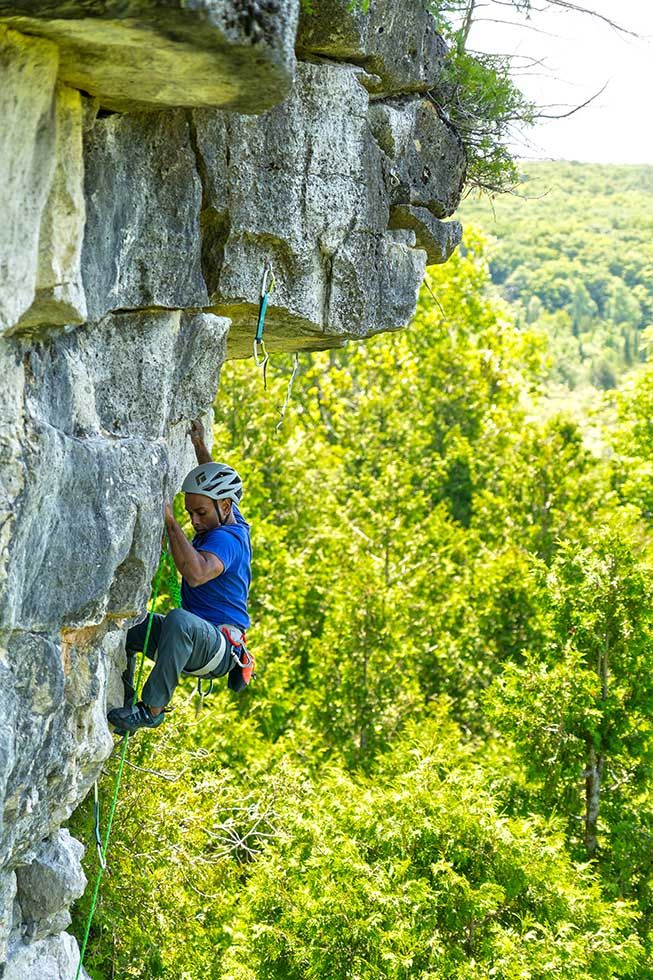
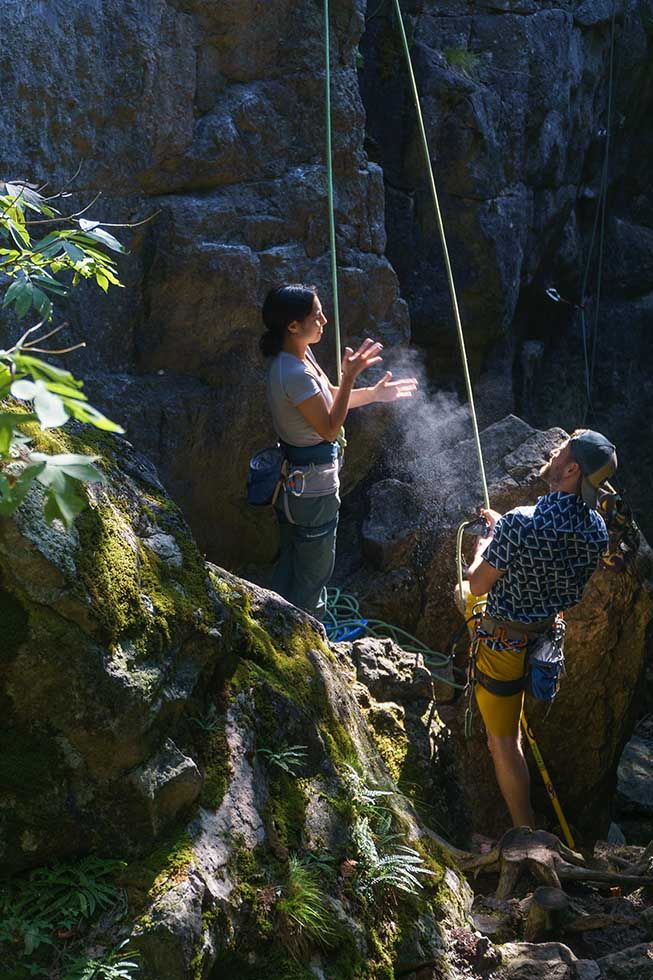
An anchor is any device or method for attaching a climber, a rope, or a load above or onto a climbing surface—typically rock or ice—either permanently or temporarily. Anchors must be set up beforehand; the gear required to build the anchor depends if there are bolted anchor loops at the top of the route or not. Carabiners, which are metal loops with spring-loaded gates that can withstand high dynamic forces, are used to attach the rope to the bolted anchor loops (typically two).
Two popular areas for learning rock climbing are Metcalfe Rock near Collingwood and Rattlesnake Point in Milton. Both climbing areas (known as crags) are well suited for beginners and in close proximity to towns with après climbing beer and food. More importantly, both crags have teaching stations at the base of the cliff and easily accessible anchors at the top to set up top ropes. Top roping is one of the most enjoyable ways to learn climbing: the climber is tied into a rope that runs through an anchor at the top of the climb and back down to their belayer which eliminates any potential for large falls. A belayer is someone who is attached to a belay device on the other end of the rope and takes out excess rope from the system while the climber is ascending.
For sport climbing, an established route will have bolts already drilled along the route as well as bolted anchors at the top. The climber is tied into the rope and must clip the rope to the bolts as they ascend. Sport climbers use quick-draws in order to clip the rope to the bolt. Quickdraws are two carabiners attached by a sling; one carabiner is clipped to a bolt and the other carabiner is clipped to the rope. If the climber falls, the rope will be caught by the last quickdraw that is clipped to the bolt.
Traditional (or trad) climbing does not use bolts; instead the climber uses removable metal pieces (known as gear or protection) that can be wedged into cracks or pockets along the route. The climber must clip the rope to the gear using quickdraws and an anchor must be built at the top of the route. The gear is retrieved by the last person climbing the route.
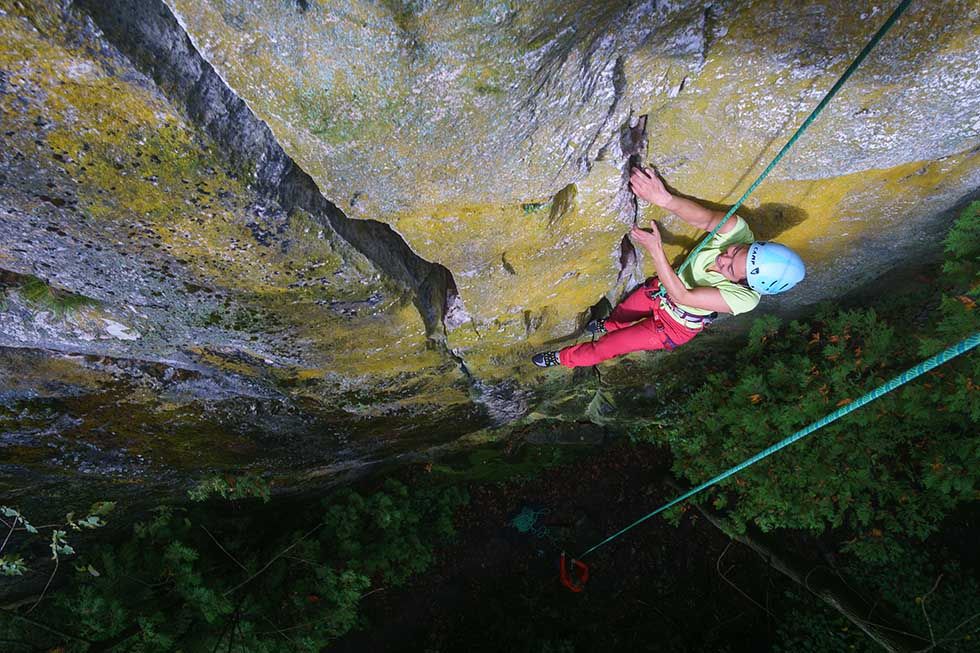
All three styles of roped climbing require a climbing partner to belay using a belay device: a friction-based device that stops the rope when the climber falls. The belayer must pay attention to the climber and take excess rope out of the system using the belay device—the climber’s life is literally in the hands of the belayer! Note that sport climbing and trad climbing are more suited for non-beginners.
Climbing shoes are ideal but not necessary on easier routes for first timers. Climbing shoes have sticky rubber and pointed toe-edges to help you stand on small foot holds; they should fit snugly but not too tight. If you fall in love with climbing, be sure to spend the time to find the best climbing shoe to your foot.
A climbing helmet is specifically designed to protect the climber’s head from impacts that come from above, behind and from the side. Sometimes a climber may flip upside down during a fall and a helmet is the best piece of protection for the head. A belayer should also wear a helmet in case debris or loose rock comes off the wall while someone is climbing.
Finally, climbing chalk is very helpful for those with sweaty hands. Chalk, which absorbs moisture, is kept in a chalk-bag that is tied around a climber’s waist or to the back of a harness.
Climbing is more than just muscling your way up the wall. Successful climbs involve pushing off your feet, twisting your knees, or changing the angle in how you grip the climbing hold. What’s unique about climbing is that the movements that worked for your body may not be the same movements that work for someone else. Your sequence of moves is called beta, and your beta is unique, depending on your height, reach, strength, and flexibility.
Climbing not only provides a physical challenge, but also a mental challenge. Problem solving your way up a route and figuring out the best sequence of hand and foot moves is an excellent brain exercise—like many tasks, climbing is a skill-based sport that is best learned through practice.
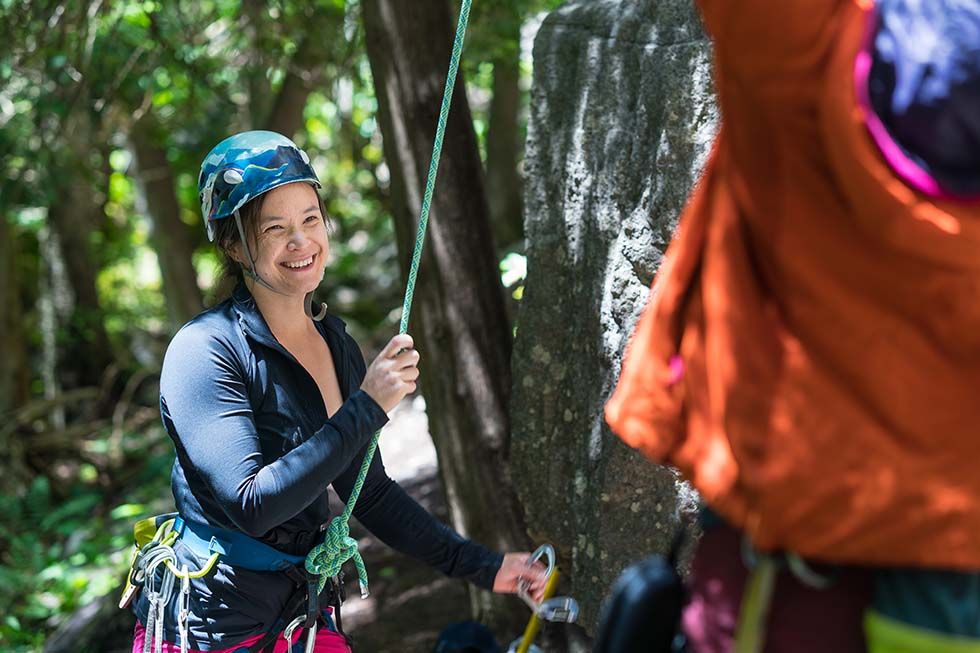
Although climbing can feel like an individual sport, it takes two people to reach the top of a climb as someone needs to be holding the other end of the rope. The relationships that are forged from climbing run deep—having absolute trust in your climbing partner’s ability to keep you safe while belaying is paramount. Climbing partners often share beta with each other while trying to ascend a route. The bonds formed during climbing often go beyond the climbing wall to create long lasting friendships.
The vertical world of rock climbing is massive and extends far beyond the Niagara Escarpment. Climbing style and type of rock varies greatly from one part of the world to the next. For example, the overhanging cave style of climbing on sandstone rock in Kentucky, USA, is very different from the pocket-pulling style of climbing on limestone rock in Siurana, Spain. The Escarpment is known for limestone—white vertical and overhanging walls boast good holds and obvious features. But we have black off-vertical walls (known as slabs) with smaller holds that require more technical climbing. Learning to climb all styles of rock will make you a well-rounded climber and more prepared to tackle climbs worldwide.
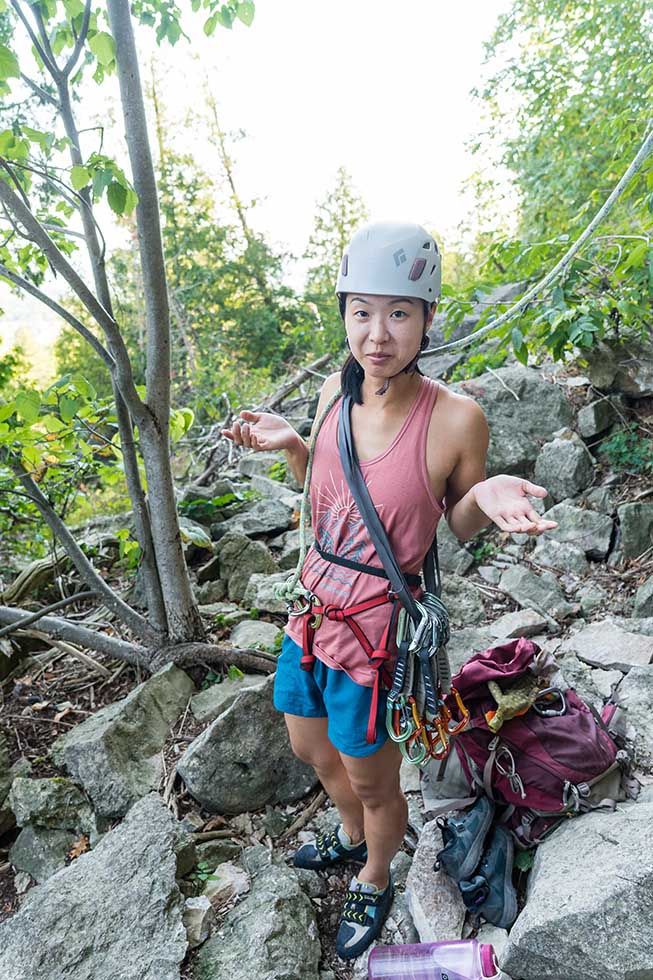
This summer, discover what climbing is all about! Whether you are learning in the climbing gym or taking a rock climbing lesson outside, enjoy the process of learning something new. For those who venture outdoors, remember that climbing is a privilege and the outdoor areas we recreate in should not be taken for granted. Climbing along the Escarpment is often found on Crown land, conservation areas, private land, and everything in between. A non-profit, volunteer organization known as the Ontario Alliance of Climbers (OAC) maintains relationships between landowners/ managers and climbers. The OAC organizes environmental clean ups, climbing festivals and bolting projects but more importantly the OAC’s mission is to keep open access of climbing areas in Ontario. Consider signing up to join the OAC for their worthy causes and be part of a climbing community right in your own backyard. Climb on!
DISCLAIMER: This is not an official guide, nor instructions on how to rock climb. Climbing can be dangerous and should be done at your own risk—it is advisable to employ a certified instructor when learning to climb.

